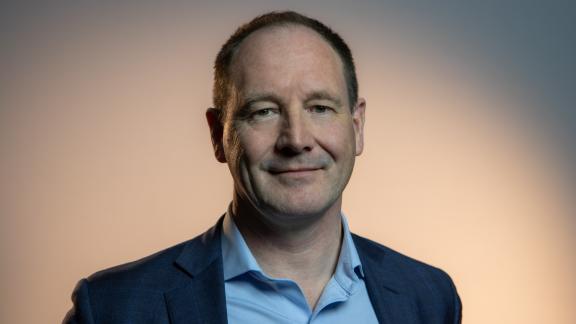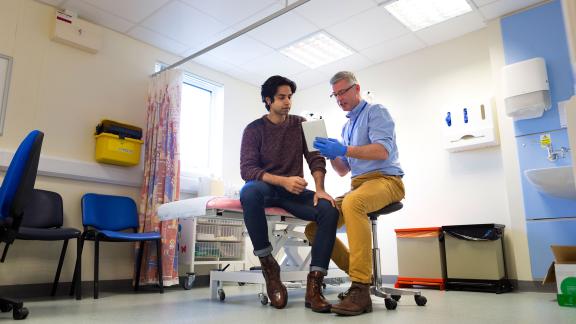Applying human-centred design across the entire health system

Mark Davies, IBM’s chief medical officer for Europe, the Middle East and Africa, share his views on how applying human-centred design across the health system can lead to more meaningful insights and transform how the service is delivered and received.
The disruption of the pandemic has led service industries to see the importance of identifying groups of people they serve, recognise their specific needs, cater for individuals within these groups and ultimately provide them with better experiences. This focus has accelerated the emphasis on design as a means to deliver human-centred experience. This need is particularly relevant in healthcare, where the challenge has required a rapid shift in approach.
The last best digital experience we have anywhere in our lives becomes the benchmark for every experience, including healthcare
The accelerated shift towards remote care has increased the trend towards digital health consumers, with expectations to match. The last best digital experience we have anywhere in our lives becomes the benchmark for every experience, including healthcare.
Now is the time to further embrace a human-centred experience approach as we accelerate the adoption of digital capability into our care systems. To successfully transform through design, we need to consider the whole service pathway as experienced by an end user, both physical and digital. This is true whether they are a member of the public, carer, patient, clinician or member of staff.
Five key lessons on designing for experience:
Human-centred. To design and deliver a human-centred service we must put ourselves into the shoes of our users. We create personas through user research, mapping the challenges and pain-points of these cohorts. This informs the design and delivery of the service, centred on satisfying the priority need for our users. We need to become more sophisticated in our understanding of these groups and the ways they interact with the services we provide. We must move away from binary concepts like the digitally included or excluded, instead seeing this as a continuum with nuances at the fringes. A concept described in design circles as ‘designing for the edge.’ This is one of our most powerful service tools in the fight against health inequalities.
Value driven. Once we understand our users’ greatest challenges, we translate these as needs and prioritise them into the order in which we will transform a service, starting with the highest value items. We order these based on feasibility (complexity and cost), viability (business value, clinical risk, strategic alignment) and desirability (scale of user problem solved). This method of prioritisation is called Speed-to-Value. As we follow a user-centred design process there are inevitable trade-offs based on affordability. We need transparent ways to discuss the different value prioritisations.
Scaled. For design to deliver enduring change, it needs to be scalable across an organisation. We need to design for scale from the outset, using Enterprise Design Thinking, which enable organisations to enhance end-to-end human experiences and reinvent organisational structure. This is particularly important as we embrace the principles of population health management which is in essence an exercise of large-scale service design around groups with common needs, based on best available insights. Without a design-with-scale mentality we are destined to repeatedly get stuck in the ‘pilot phase.’
Agile in delivery. To successfully implement human-centred solutions at scale we must be active and agile in our approach. It is a principle in other industries that you don't expect to get it right first time, and data and insights are used to iterate and improve in rapid cycles of change. The speed itself is seen as having merit, in generating energy, engagement and motivation. Clearly this is complex in a healthcare setting given the implications of clinical safety and quality. However, there are many aspects of our services which could adopt such a rapid development cycle. We begin small and in a safe environment to test, learn and iterate before scaling.
Shared vision. Our human-centred ambition is to design for frictionless care, underpinned by our mantra: ‘friction out, intelligence in.’ This is the mindset of designing at scale to create smarter care using automation, analytics, and other enabling technologies. Although there is a prevalent mindset in healthcare that is empathic and human focused, the ability to execute and deliver brilliant experiences is held back by legacy technology, burdensome processes and fragmented organisations. There is evidence from most other industries that it is a realistic aim to take significant friction out of people’s lives and give them back time.
Applying human-centred design across an entire health system leads to more meaningful insights and fundamentally transforms how the service is delivered and received
Putting a person’s experience at the centre of every process or interaction to overcome problems is essential. Starting with experience, and harnessing the opportunities of technology and automation, we can transform existing services quickly to enable better human experiences. Applying human-centred design across an entire health system leads to more meaningful insights and fundamentally transforms how the service is delivered and received. There is no doubt we all want to revolutionise user experience; perhaps we need to embrace some of the lessons from other industries to give us the confidence to achieve it.
Mark Davies is chief medical officer (Europe, Middle East and Africa) at IBM. You can follow Mark on Twitter @MarkPriceDavies



